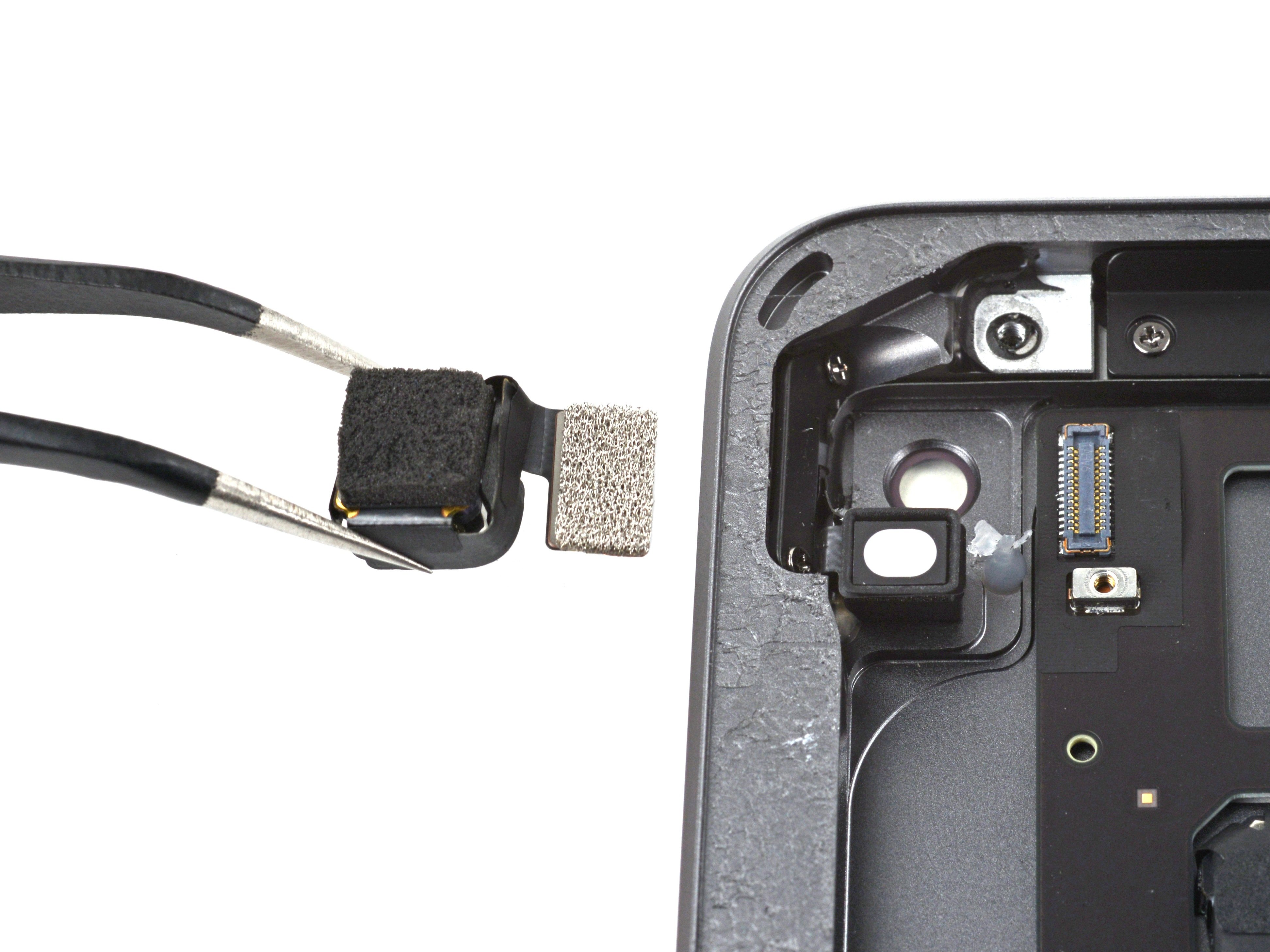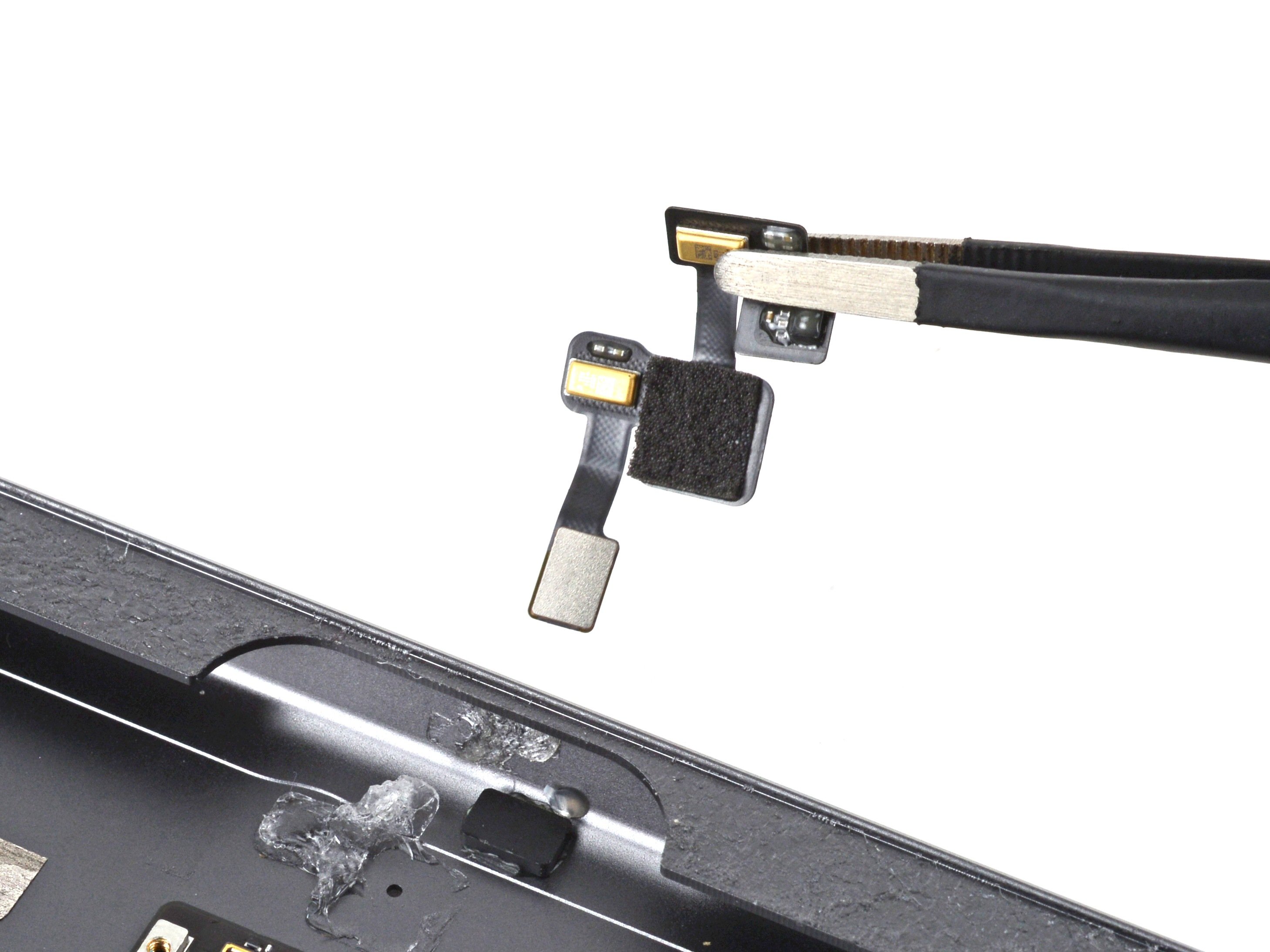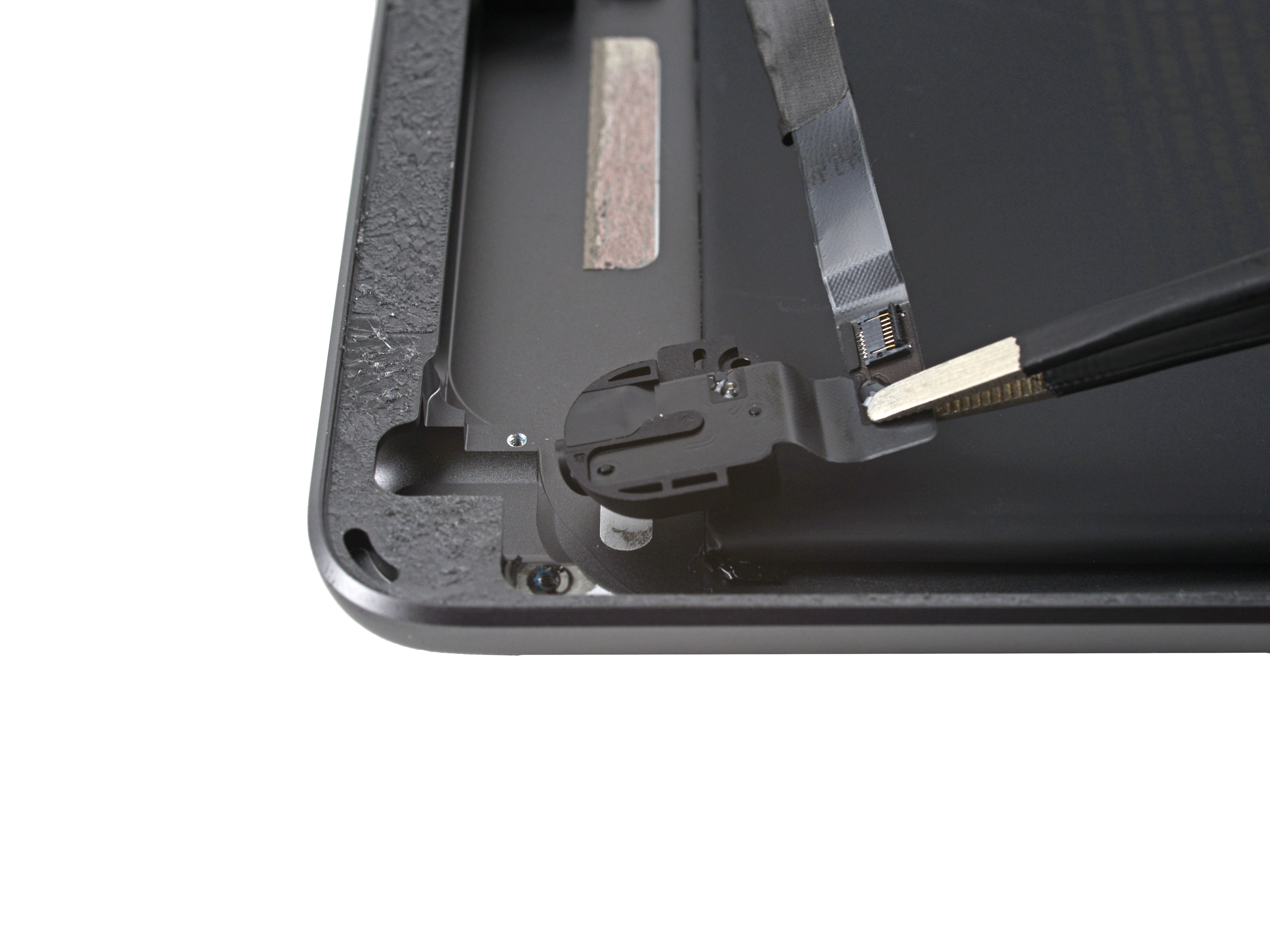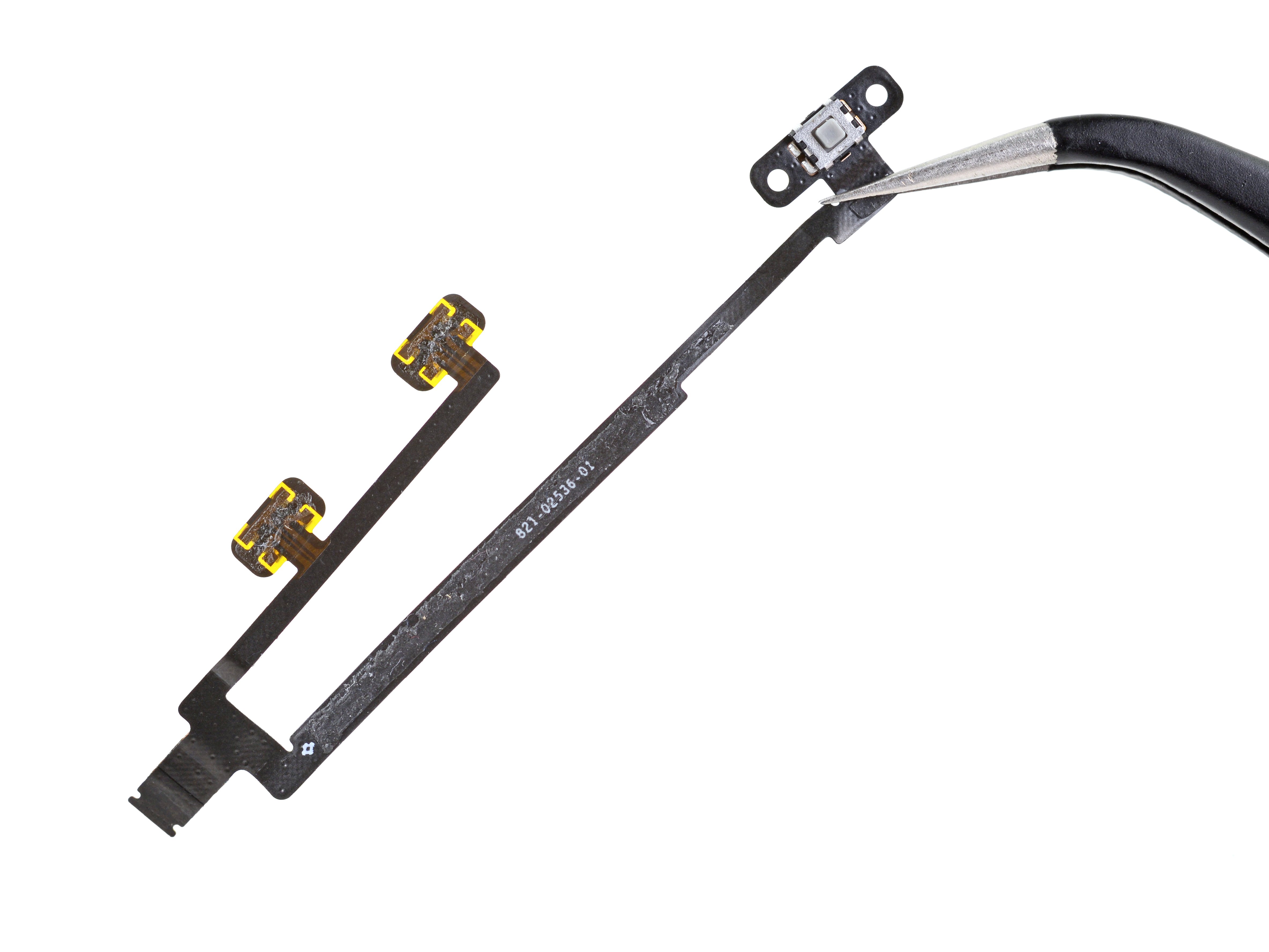How to Replace iPad 4 GSM Home Button Assembly Tutorial
Duration: 45 minutes
Steps: 45 Steps
Get ready to dive into this guide and swap out your home button assembly from the front panel. It’s a breeze, and we’re here to help you every step of the way! If you need help, you can always schedule a repair.
Step 1
Before diving in, we suggest giving your microwave a little TLC. A quick clean-up will ensure that any pesky residue doesn’t cling onto the iOpener. Trust us, your future self will thank you!
– Pop that iOpener right in the middle of the microwave like a champ!
Tools Used
Step 2
Keep an eye on the heat level of your iOpener during the repair. Too much heat can make it go boom! Remember, no heating beyond 100˚C (212˚F).
If your iOpener looks like it’s had one too many snacks and is swollen, steer clear of it.
If the middle of your iOpener is still feeling a bit toasty, just hang tight and let it cool down a little before you give it another heat-up. A well-heated iOpener should keep its warmth for about 10 minutes.
– Give that iOpener a warm-up in the microwave for thirty seconds. It’s like a spa day for your tool!
– As you dive into the repair, keep an eye on your iOpener. When it starts to cool down, pop it back in the microwave for another thirty seconds to keep the good vibes going.
Tools Used
Step 3
The iOpener gets pretty toasty, so handle it with care! An oven mitt can be your best friend here if things get a bit too hot to handle.
– Carefully take the iOpener out of the microwave, gripping one of the flat ends to steer clear of that toasty center.
Tools Used
Step 4
No microwave? No problem! Just pop your iOpener into some boiling water to heat it up.
– Grab a pot or pan and fill it up with enough water to give your iOpener a nice, warm bath.
– Crank up the heat and bring that water to a rolling boil, then turn off the heat like a pro.
– Carefully drop the iOpener into the hot water and let it soak for 2-3 minutes. Make sure it’s completely submerged, giving it a cozy dip.
– Use some tongs to fish out the warmed-up iOpener from its steamy bath.
– Give the iOpener a good towel dry, just like drying off after a refreshing swim.
– And there you have it! Your iOpener is all set for action! If it needs a little more warmth, just repeat the process: boil the water, turn off the heat, and let it relax in there for another 2-3 minutes.
Tools Used
Step 5
Put on those safety glasses to keep your peepers safe, and remember to treat that LCD screen with care – it’s more delicate than it looks!
– If your display glass has seen better days and is cracked, let’s keep those shards in check and avoid any mishaps while you tackle the repair by slapping some tape on it.
– Grab some clear packing tape and lay down overlapping strips over your iPad’s display until it’s completely covered. Think of it as a protective blanket for your screen!
– Now, do your best to stick to the rest of the guide as we go along. Just a heads up, once the glass starts to break, it might get a bit rebellious and crack more as you work. You might need a metal prying tool to help scoop out those pesky glass pieces.
Step 6
Hey there! Just a friendly reminder that while you’re diving into this repair, you might encounter some sharp glass edges. To keep your peepers safe from any unexpected flying bits, we highly recommend rocking a pair of safety glasses. Your eyes will thank you!
– Gently place the iOpener flat on the right edge of your iPad, ensuring it makes nice contact with the surface—it’s like giving your device a cozy little hug!
– Now, let that bag chill on the iPad for about 90 seconds. This will warm things up nicely before we dive into opening the front panel!
Tools Used
Step 7
Getting that wedged tip of the opening tool in between the glass and plastic might take a little muscle! Just take your time and be gentle. Wiggle the plastic tool back and forth as you go, and you’ll be making progress before you know it.
– Look closely at the upper right corner of your iPad. There’s a sneaky little gap in the adhesive ring, about 2.0 inches (~5 cm) from the top. Time to take advantage of this little trick!
– Now, let’s get that tool in place! Line it up with the mute button. Carefully insert the tip of a plastic opening tool into the gap between the front glass and the plastic bezel. Just nudge in the very tip of the tool to gently widen the crack.
Step 9
– With the plastic opening tool snugly positioned between the front glass and plastic bezel, gently slide a plastic opening pick into that little gap right next to your trusty tool.
Step 10
– Gently take out the plastic opening tool from your iPad, then slide that opening pick in a little deeper, about half an inch under the front glass. You’re doing great!
Step 12
The adhesive is super strong, so you might need to put in a little elbow grease. Take your time and be gentle with it!
If you spot the tip of the opening pick peeking out from beneath the front glass, gently pull it out a tad. While having the pick this deep won’t cause any harm, it might leave some adhesive residue on the LCD. Just a heads up!
– As the iOpener warms up the bottom edge, let’s start peeling off that adhesive from the right edge of your iPad.
– Gently glide the opening pick down the edge of the iPad, releasing the adhesive bit by bit. You’re doing great!
Tools Used
Step 13
As you gently release the adhesive, you might find it helpful to slide the heated iOpener back over to the right edge of the iPad. This little adjustment can make a difference depending on how long the iPad has been cooling off while you tackled other tasks.
– If your trusty opening pick is feeling a bit stuck in the adhesive, just give it a gentle roll along the side of the iPad to keep that adhesive loosening up. You’re doing great!
Tools Used
Step 14
– Before you pop that first opening pick from the bottom corner of your iPad, slide a second pick under the right edge of the front glass. This little buddy will help keep the adhesive from sticking back down.
– Give your iOpener a warm-up, then place it at the top edge of your iPad. Let’s keep that heat going!
Tools Used
Step 15
The Wi-Fi antenna hangs out at the bottom right edge of the rear case of your iPad, secured by some screws and a cable. Since the antenna has a specific orientation, it’s super important to handle it with care—otherwise, you might accidentally cause some serious damage to it. Let’s keep that Wi-Fi connection strong!
– Alright, folks, it’s time to proceed with a sprinkle of caution! We’re about to free the antenna from its adhesive grip on the front panel. Just remember, we want to do this delicately to avoid any mishaps with the sensitive components connecting the antenna to the iPad’s bottom. So, let’s take it step by step and keep those fingers steady!
Step 16
Hey there! Just a heads up: avoid sliding the pick beyond the bottom right corner. You wouldn’t want to accidentally mess with the Wi-Fi antenna. Keep it safe and sound!
– Gently glide the opening pick around the bottom right corner of the iPad to peel away that stubborn adhesive. You’ve got this!
Step 17
– Gently glide the opening pick’s tip along the bottom edge of your iPad, freeing up the adhesive that’s holding on to the Wi-Fi antenna. You’re doing great!
Take it easy as you glide that opening pick along the bottom right edge of the front panel. Just a heads-up: the Wi-Fi antenna is hanging out right near the corner, and it can get a bit grumpy if the adhesive gets handled carelessly. So, keep it cool and steady!
Just a little tip: keep that pick snugly under the front glass—don’t yank it all the way out! Pull it out just enough so that about 1/8″ (3 mm) of the tip is still hanging out under the glass. You’ve got this!
Step 18
– Now that you’ve navigated past the Wi-Fi antenna (that’s about 3″ or 75 mm from the right edge, right near the home button), gently slide the opening pick back in all the way.
– Next up, slide that pick to the right to release the adhesive that’s keeping the Wi-Fi antenna snug against the front glass. You’re doing great!
Step 19
Keep the iOpener cozy, but not too toasty! Heat it for no more than a minute at a time and give it a little break of at least two minutes before warming it up again. You’re doing great!
If the adhesive has gotten a bit too chilly along the bottom edge, just pop that iOpener back in the heat to warm things up where you’re working. You’ve got this!
– Keep gently peeling away the adhesive at the bottom of the iPad, making sure to pull the opening pick out far enough to navigate around the home button. Once you’re past the home button, slide the pick back in to a depth of about 1/2 inch (10 mm). You’re doing great!
Tools Used
Step 20
– Keep peeling back that adhesive all the way along the bottom edge of the iPad—you’ve got this!
– Slide the opening pick in and leave it snug under the front glass by the home button. It’ll be your trusty sidekick!
Step 22
If your adhesive has cooled down a bit too much, just pop that iOpener back along the top edge and keep on going! If the iOpener itself has gotten a little too chill, give it a quick reheat and you’re good to go!
– Gently glide the opening pick along the top edge of your iPad, giving it a little pull to navigate around that front-facing camera bracket.
– The adhesive in this area is pretty strong, so you might need to apply a bit of elbow grease. Take your time and be careful—nobody wants to slip and accidentally harm themselves or their iPad!
– If the opening pick seems to be getting stuck in the adhesive, try ‘rolling’ the pick as illustrated in step 9.
Tools Used
Step 23
If the adhesive is nice and toasty, feel free to take the iOpener off the iPad for some ease of movement. But if it’s still holding on tight, give that iOpener a quick reheat and place it on the left edge while you work your magic.
– Keep peeling away that adhesive along the top edge of your iPad, and gently maneuver the opening pick around the top left corner like a pro!
Tools Used
Step 24
Hey there, just a heads up! The digitizer cable is hanging out about 2″ (50 mm) from the bottom of the iPad. Make sure to stop sliding that pick when you reach around 2.25″ (60 mm) from the bottom. You’ve got this!
– Gently glide that opening pick down the left edge of your iPad, letting it do its magic by releasing the adhesive as you go. No worries here—the adhesive is pretty thin along this side because of the digitizer. Just keep that pick shallow (no more than 1/2 inch or 10 mm) to avoid any accidental damage to the digitizer. You’ve got this!
Step 25
Be super careful! The bottom of that digitizer cable is just about an inch (25 mm) away from the bottom of the iPad. Take your time and work slowly to avoid accidentally cutting this cable.
– With the opening pick still nestled under the bottom edge of your iPad, gently work it to loosen the adhesive at the bottom left corner. You’re almost there!
Step 26
It looks like some of the adhesive around the iPad’s edges might have decided to make a comeback. If that’s the case, gently slide a pick underneath the edge of the iPad where the front glass is still hanging on, and carefully ‘slice’ through that adhesive. Remember, if you need help, you can always schedule a repair.
– Grab one of those handy opening picks and gently nudge up the bottom right corner of your iPad. Once it’s lifted, give it a little pinch with your fingers to hold on tight.
Step 27
Watch out for any sticky stuff that might still be hanging on! Grab an opening pick and gently slice through any adhesive that’s keeping the front panel in place.
– Grab your iPad by the top and bottom right corners, and gently twist that front glass away like you’re unveiling a surprise!
– When you’re putting everything back together, don’t forget to whip out a microfiber cloth and some compressed air to zap away any dust or fingerprints from the LCD before you pop that glass back on.
Step 28
The screw at the bottom left is playing hide and seek behind the home button ribbon cable connector. Gently nudge that cable aside to get to the screw and give it the removal love it deserves!
– Take out those four tiny 2 mm Phillips #00 screws holding the LCD snug against the aluminum frame. You’ve got this!
Step 29
Handle the LCD with care! That ribbon cable is a delicate little thing and could snap if you bend it too much.
– Grab your trusty plastic opening tool or a spudger and gently lift the right edge of the LCD out of the iPad. You’re doing great!
– Now, give the LCD a little twist along its left edge and carefully lay it down on top of the front glass panel. Easy peasy!
Tools Used
Step 30
– Grab your trusty spudger and gently peel back that piece of tape that’s keeping the LCD ribbon cable connector under wraps. You’re almost there!
Tools Used
Step 31
– Gently lift the retaining flap on the LCD ribbon cable ZIF connector.
– With a little finesse, use your fingers or tweezers to wiggle the LCD ribbon cable out of its cozy spot on the logic board.
– If your iPad’s LCD screen is playing hard to get and doesn’t light up after reconnecting the ZIF connector, try giving it a little pep talk by force restarting. Just hold down the power button and home button together for at least ten seconds until you see that familiar Apple logo pop up!
Tools Used
Step 32
– Gently lift the LCD away from the front panel without touching its surface. You’ve got this!
Step 33
If you see some electrical tape hanging out, go ahead and peel it off to free the Wi-Fi antenna, speaker cable, and home button ribbon cable. You’ve got this!
Step 35
– Grab your trusty tweezers and gently pull that home button ribbon cable straight out of its cozy spot on the logic board. You’ve got this!
Tools Used
Step 37
– With the spudger in hand, gently lift that stubborn tape holding the digitizer ribbon cable down to the logic board. You’ve got this!
Tools Used
Step 38
– Gently lift the retaining flap on both of the digitizer ribbon cable ZIF connectors. You’ve got this!
Step 39
– Grab the flat end of a spudger and gently pry up the adhesive hiding beneath the digitizer ribbon cable. It’s like giving it a little wake-up nudge!
– Now, carefully pull the digitizer ribbon cable straight out from its cozy sockets on the logic board. You’ve got this!
Tools Used
Step 40
– Gently lift the digitizer ribbon cable and grab your trusty spudger. Use the flat end to carefully break the adhesive bond that’s keeping the cable snug against the rear aluminum case. You’ve got this!
Tools Used
Step 41
– With a gentle touch, carefully pull the digitizer ribbon cable out from its cozy spot in the aluminum frame.
– Now, it’s time to liberate the front panel from the iPad and set it free!
Step 42
Keep an eye on that iOpener! Overheating can be a bummer during your repair adventure. We suggest giving it a cool two-minute break before heating it up again.
The home button assembly is glued to the front panel, so we recommend giving it a little warmth with an iOpener to make peeling it off easier. Trust us, it’s worth it!
– Pop that iOpener into the microwave and give it a whirl for one minute on high power. If you’re rocking the newer gel-filled version, just 30 seconds will do the trick!
– Now, place the warmed iOpener right over the home button on the front edge of your display. You’re doing great!
Tools Used
Step 44
– Gently slide that trusty plastic opening tool under the right side of the home button assembly and give it a little upward nudge, freeing the adhesive on that side like a pro!
– Now, using the same nifty technique, let’s tackle the left side of the home button and set it free from its adhesive bonds.
– Carefully lift the home button mount away from the front panel, and voilà, you’re making progress!
Step 45
– Gently slide the edge of your trusty plastic opening tool beneath the home button mounting bracket’s edge.
– Now, glide that tool along the retaining spring bracket, freeing it from the adhesive’s grip.
– With a smooth motion, lift the home button along with its mounting bracket away from the front panel.




































































































